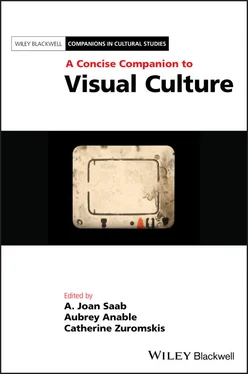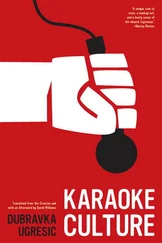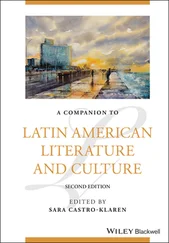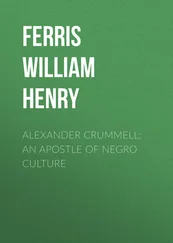Chapter 6 Scene Selection: Objects Lost and Found
Sharon Willis
“Scenes from the Institutionalization of the Field,” the title of our Part I, immediately puts me in mind of the scene selection function built into the design of most of the DVDs that deliver to me my object of study: film. Among its many rewards, the DVD offers us the ability to archive or edit this object, to pause it or repeat it, to return again and again to its most pleasurable or confusing or elusive moments. This device both denatures the “original” and restores it to us in the capacities for reflection and analysis it affords us.
In Death 24× a Second: Stillness and the Moving Image, Laura Mulvey pays special attention to the temporal reshaping that digital technology brings to the cinematic object. “[W]ith this completely altered sense of time,” she writes, “it seems possible to capture the cinema in the process of its own coming into being. A segment extracted from the flow of narrative bears witness to the pull towards tableaux that has always been there in cinema” (Mulvey 2006, 150). Spectacle resists narrative in this format, she points out appreciatively. “To halt, to return and to repeat these images is to see cinematic meaning coming into being as an ordinary object detached from its surroundings… But delaying the image, extracting it from its narrative surroundings, also allows it to return to its context and to contribute something extra and unexpected, a deferred meaning, to the story’s narration” (150–1). In a passage inflected by the affective tonality of pleasure and gratification, Mulvey registers the ways in which digital technology may restore cinema to us as a “lost object.”
What a contrast to the aggressive force that energized her famous early essay “Visual Pleasure and Narrative Cinema,” which offers a section heading of the form “Destruction of Pleasure as a Radical Weapon” and ends by announcing its ambition to “free the look of the camera into its materiality and the look of the audience into dialectics and passionate detachment” (Mulvey 1989, 126)! In the loss of an object through its willful destruction, this early statement strives to escape the entanglements of visual fetishism, while Mulvey’s more recent work seems to revel in its pleasures, endowing them with an analytical force.
But among all its gratifications, analytical and sensual alike, DVD technology also imposes an interpretive frame extrinsic to film as an object—no matter how we construe it. Dividing films by “scene” selection or into “chapters,” DVDs attach titles to the segments they create, supplying an interpretive gloss on the digital artifact. Into the bargain, the choice itself to name this segmentation by scene or chapter evokes the gravitational pull of other media—theatrical or literary, for example. Film mutates into an intermedial hybrid, a creolized object across which, and through which, media speak to one another and entertain one another’s ghosts. Thus the imprint of a new form of segmentation—quite foreign to the film medium itself in its management of the information it delivers as a “film”—reminds us of the loss of that very object, even as its renewed commodification as digital effect makes it available to us in easily manipulated—and therefore revelatory—form.
Digital forms and incarnations of cinema may both displace and restore our objects, making archivists of us all. It should surely be no surprise that, with the emergence of digital technologies, we in film studies have become increasingly preoccupied with the archive—that is, with archiving and curatorial processes as they intersect with critical and theoretical ones, as Catherine Russell proposes in Archivology . She suggests that, as these technologies dissolve the divide between public and private and reconfigure the status and practices of archiving, we might productively return to Walter Benjamin, whose “historiography is based on a nonlinear conception of correspondences between past and future and on the shock or crystallization of the moment produced through juxtaposition and montage.” “His aesthetics of awakening and recognition,” she argues, “are techniques of interruption of the ‘flow’ of images on which conventional historicism relies” (Russell 2018, 28).
But as we archive and explore the archive, we are reminded that our disciplines in and around visual studies are marked by shiftiness: our objects stubbornly refuse stability and demand constant redefinition, as do our fields of study themselves. In all this movement and mutation, what happens when we take our field of study to be our theoretical object seems especially vexed. In its anxiety about its boundaries and the status of its objects, our work remains tinged with melancholy, particularly when we consider our archives and the shifting history of the present as we seek to read it. Can we read it and see it at the same time? We find ourselves increasingly concerned with endings, as our fugitive objects retreat or disappear or transform, eluding us. Ultimately, I will be concerned with two movements: the disappearance of some objects and the failure of others to disappear—especially those objects we wish would not remain so durable: race, gender, ethnicity. These movements, it seems, traverse the various conflicted, dangerous, and oppressive intersections of the visual and the social fields.
To explore the anxious encounters between object and endings, I enter my own recent archive, where I find writers who are mostly friends and former colleagues taking stock of their own investments in their fields. I find each one in a scene of some sort of ending—though not at an end. No doubt, this ambient “sense of an ending” relates to archival impulses as well as to the narrative drive that shapes our efforts to make accounts of our history. As Carolyn Steedman reminds us in Dust , “ History is not about ends … history does something most peculiar (as writing) and unique (as cognition); it turns what possesses narrative coherence into something without an end, possessing only an ending” (Steedman 2002, 149).
In this spirit, I consider the endings of some recent books that reflect on our field(s). Each functions uneasily, almost uncannily, across the meanings of “end”: conclusion, objective, telos, remnant. For instance The Melancholy Art , Michael Ann Holly’s moving meditation on the nature of the art historical project and its objects, centers (like much recent film studies scholarship) on the issue of melancholy. “I am tempted to argue in general that the discipline of art history is eternally fated to be a melancholic one, primarily because the objects it appropriates as its own always and forever keep the wound open (the cut between present and past, word and image)—resistant to interpretation, these works of art nonetheless insistently provoke it” (Holly 2013, 116). “These beautiful orphans, in other words,” she writes, “animate scholars’ essays on the one hand because they ‘live,’ and on the other, because they are long ‘dead.’ It is melancholy that affords us a disciplinary soul” (132).
Paolo Cherchi‐Usai ends The Death of Cinema , his anxious, uneasy meditation on the extinction of film, with two sections that break free of his analysis in the form of a coda. That piece consists of the anonymous “A Reader’s Report to the Publisher,” followed by a “Reply.” Here the book’s narrating persona speculates about the cinema’s slow slide into oblivion. “Unable to preserve cinema by means of cinema, the archives (no doubt after a few pathetic gestures such as proposing to manufacture film for their own use) will be forced to face up to reality and go for other options. Projecting a film will become first a special circumstance, then a rare occurrence, and finally an exceptional event,” writes this reader (Cherchi‐Usai 2001, 124). “Eventually nothing at all will be projected, either because all surviving copies will be worn to a frazzle or decomposed, or because somebody decides to stop showing them in order to save for future duplication onto another format the few prints that remain” (124). What a vivid picture of inertia and exhaustion. But what follows makes a different claim: “There will be a final screening attended by a final audience, perhaps indeed a lonely spectator. With that, cinema will be talked about and written about as some remote hallucination, a dream that lasted a century or two” (124).
Читать дальше












